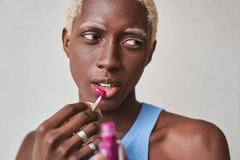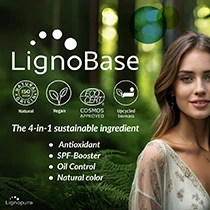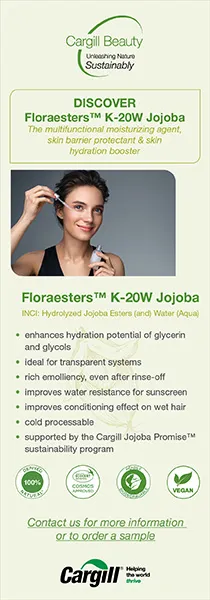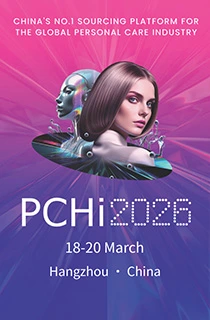Deodorant tech: Tackling body odor with innovations in bacteria, botanicals and textiles

27 Nov 2023 --- The intricate relationship between body odor formation and deodorant product composition is unveiled, setting the stage for a new era in personal hygiene. Researchers review the latest progress in developing fresh antiperspirant and deodorant active ingredients that are alcohol-free, paraben-free and naturally derived.
Recent studies in body odor formation spotlight the role of skin microbiomes in the process. Identified bacterial species, including Propionibacterium and Corynebacterium, emerge as key contributors to malodorous compound production.
The article explores the significance of aldehydes, sulfur compounds and carboxylic acids in axillary odor, providing a nuanced understanding of the science behind body odor.
Decoding deodorant ingredient
Deodorants primarily operate through antimicrobial agents to curb the growth of odor-forming microbiomes.
The review identified vital ingredients such as triclosan, quaternary ammonium compounds and aluminum salts remaining in center stage as antimicrobial agents. In the case of aluminum salts, which also offer antiperspirant properties, aluminum chlorohydrate emerged as a game-changer as early as in the 1940s due to its less acidic nature.
Acidifiers, introduced in the 1990s, still play a key role in reducing local pH to inhibit bacterial growth but research now unveils a shift toward naturally derived alternatives, exploring bacterial extracts and plant extracts for their deodorizing properties.
This marks a paradigm shift in the quest for effective and natural solutions.
Naturally derived alternatives
Global interest in naturally derived ingredients is driving up innovation, with bacterial and plant extracts explored as potential deodorizing agents.  Personalized deodorant formulations, tailored to individual microbiomes and genetic factors, are on the horizon.
Personalized deodorant formulations, tailored to individual microbiomes and genetic factors, are on the horizon.
Bacterial extracts like acetic acid bacterial, used in the production of vinegar and kombucha, were found to act as a deodorizing agent against malodor aldehydes.
In plant extracts, research found hop (Humulus lupulus L., Cannabaceae) formulated with zinc ricinoleate in a deo-stick combated malodor and provided antimicrobial benefits.
Additionally, Terminalia spp. was found to have a high tannin content, which can be “an excellent alternative to commercial deodorant active ingredients. It is also possible for tannins to behave as an antiperspirant agent.”
Essential oils from Satureja species (related to rosemary and thyme) and Origanum vulgare Linnaeus (oregano) present a natural arsenal against body odor-producing bacteria.
Further oil extracts from Salvia lanigera Poir (Libyan wild clary), Carum copticum (Carraway) and Asiasarum heterotropoides (from the wild ginger family) were spotlighted for their ability to fight odor-producing bacteria.
Synthetic ingredients
Synthetic solutions, such as anticholinergic agents and silver nanoparticles, are presented by the paper authors as another potential solution for body odor reduction.
Used in conditioners and shampoos, synthetic cationic block copolymer has been explored as an active deodorant ingredient, performing better than the commercially available roll-on.
Smaller silver nanoparticles have also proved to have antimicrobial activity than larger sizes. Vietnamese scientists previously explored using crude melanin extracted from the fungus Xylaria to synthesize silver nanoparticles, demonstrating potent antibacterial activity against skin-infecting bacteria.
Textile infusions
Innovations extend beyond topical applications, integrating antimicrobial agents into textiles for sustained deodorizing effects. Antimicrobial-treated textiles with silver nanoparticles offer a sustainable approach to deodorizing effects.
Antimicrobial-treated textiles with silver nanoparticles offer a sustainable approach to deodorizing effects.
In fabric innovation, Stay Fresh antimicrobial fabric treatment developed by Quick-Med Technologies received the US Environmental Protection Agency registration for its usage in textile applications.
“Hydrogen peroxide is bonded onto the fabric and acts as an active ingredient to provide gentle disinfectant property and bleaching action to the fabric. However, this technology is still under development and awaits its approval from the FDA,” highlight the paper authors.
Furthermore, nanoscale-titanium dioxide blended in textiles is presented as a solution for oxidizing and decomposing various organic gasses. Other deodorizing fabrics include phthalocyanine complex nanofibers, phthalocyanine-PVA and phthalocyanine-silk nanofibers.
Hygroscopic materials, which absorb water from surroundings to “induce evaporation and self-clogging phenomenon of eccrine sweat glands secretion,” such as propylene glycol infused polydimethylsiloxane, are spotlighted.
Research found this material can result in a “plug similar to that created by traditional aluminum salt antiperspirants. Additionally, propylene glycol is non-toxic, readily available, and has low-cost advantages.”
Future developments
Deodorant research in areas such as personalized formulations tailored to individual microbiomes and genetic factors, are gaining traction.
Sustainability also remains an important credential with eco-friendly packaging, cruelty-free testing and sustainable ingredients in high demand. The integration of circular economy principles into the industry promises a greener future.
Green progress has also been made in deodorant packaging, where Beiersdorf recently incorporated 50% recycled aluminum in lightweight cans to reduce CO2e emissions.
In a recent Special Report, Personal Care Insights highlighted other deodorant innovations gaining momentum, offering expanded sensorial properties, new galenics and silicone alternatives.
Innova Market Insights 2023 data indicates that deodorant launches grew by 15% CAGR (2018 to 2022), with Unilever and Maxingvest accounting for 40% of launches. The analysis also reveals that animal-friendly claims, including no animal testing and vegan claims, are enjoying strong growth.
By Venya Patel












